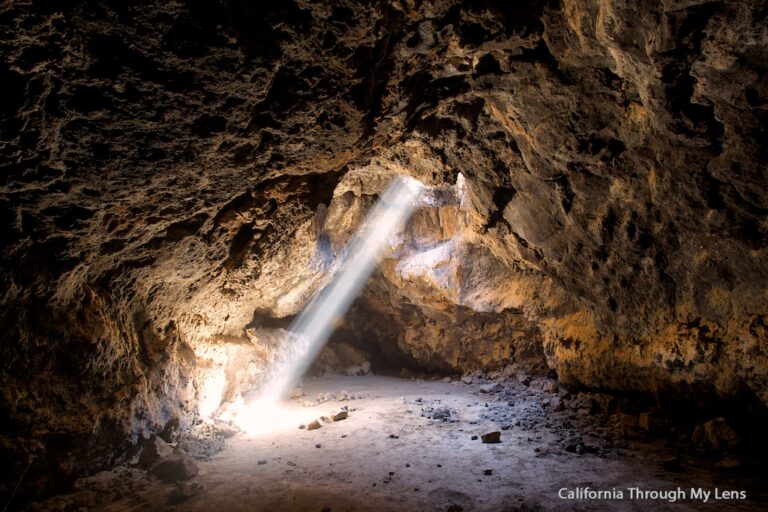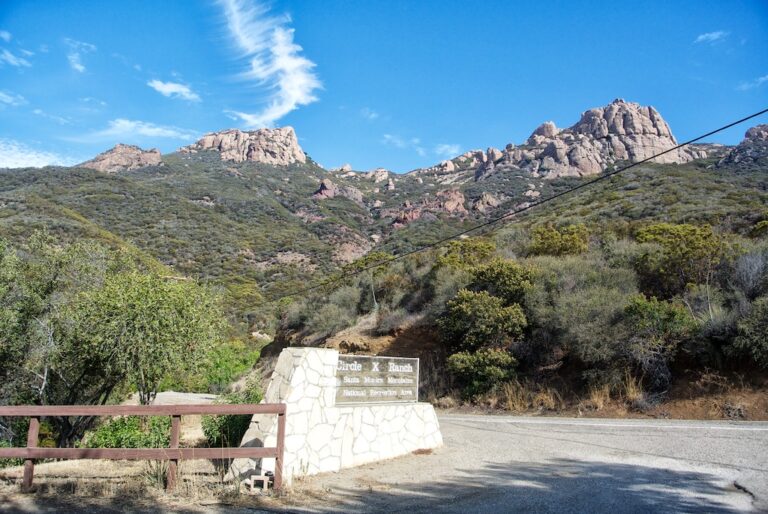Joshua Tree Quick Stops: Arch Rock, Skull Rock, Cholla Cactus Gardens
Located in Southern California, Joshua Tree National Park is a beautiful area that has thousands of acres of barren desert with different plant life and rock formations dotting its bleak landscape. For the rock climber, hiker, or adventurer, it holds miles of hiking trails and vertical rock walls to scale with days of adventure to fill up your time. While we were there, we hiked Ryan Mountain, Barker Dam, Arch Rock, Skull Rock, and the Cholla Cactus Garden. This blog post is dedicated to the last three, Arch rock, Skull Rock and the Cholla Cactus Gardens as they can all be completed by driving around and just getting out of your car for a couple of minutes. This post is from 2011, read my updated Joshua Tree Guide here.
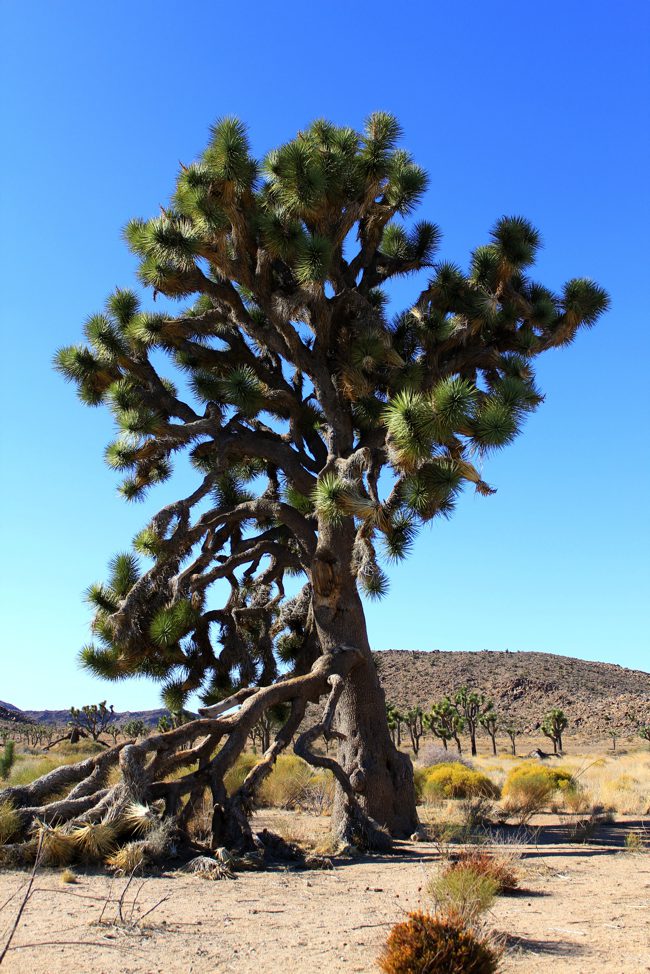
The Joshua Tree
While driving around Joshua Tree, you are met with thousands of the plants mentioned above strewn across the horizon line. These trees are unique to this area and have an otherworldly look that sets them apart from other plants. A little history on the Joshua Tree is as follows:
“The name Joshua tree was given by a group of Mormon settlers who crossed the Mojave Desert in the mid-19th century. The tree’s unique shape reminded them of a Biblical story in which Joshua reaches his hands up to the sky in prayer. Ranchers and miners who were contemporary with the Mormon immigrants also took advantage of the Joshua tree, using the trunks and branches as fencing and for fuel for ore-processing steam engines. This monocotyledonous tree is native to southwestern North America in the states of California, Arizona, Utah and Nevada, where it is confined mostly to the Mojave Desert between 400 and 1,800 meters (1,300 and 5,900 ft) elevation. It thrives in the open grasslands of Queen Valley and Lost Horse Valley in Joshua Tree National Park. A dense Joshua tree forest also exists in Mojave National Preserve, in the area of Cima Dome.”
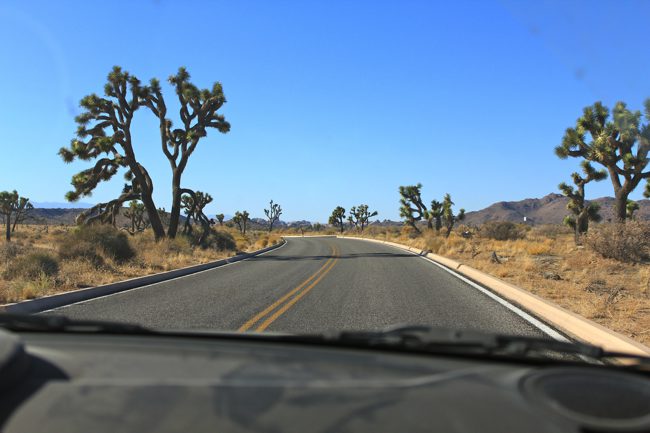
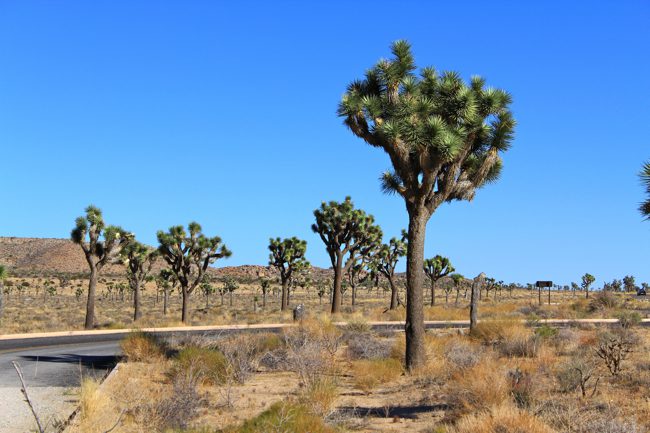
Arch Rock
In between these trees, many rock formations are often climbed by the rock climbers that visit the park. However, there are a few rocks that are their own attraction based on the way they were uniquely formed; these rocks are arch rock and skull rock. Arch Rock is nestled in the White Tank Campground next to site nine, and it is about a half-mile walk to the rock. It is straightforward to get to, and almost everyone should have no problem with it. When you turn the corner and see the arch rock with its 30 foot arch resting on top of a pile of rocks it is pretty amazing. You can climb on top of the rock and even get up close for some great pictures. After that, you simply head back the way you came to complete the hike.

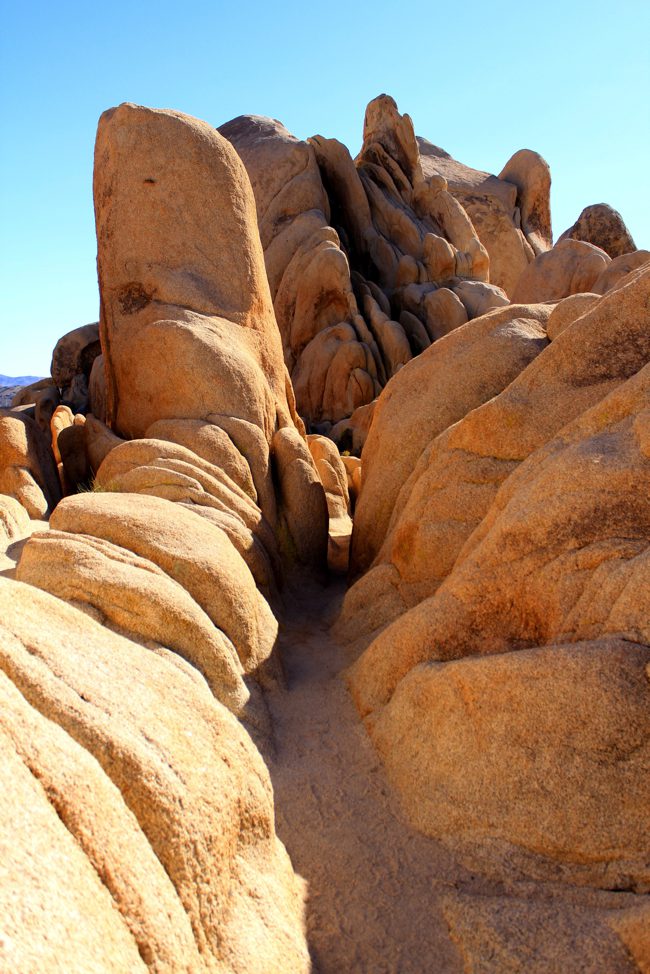
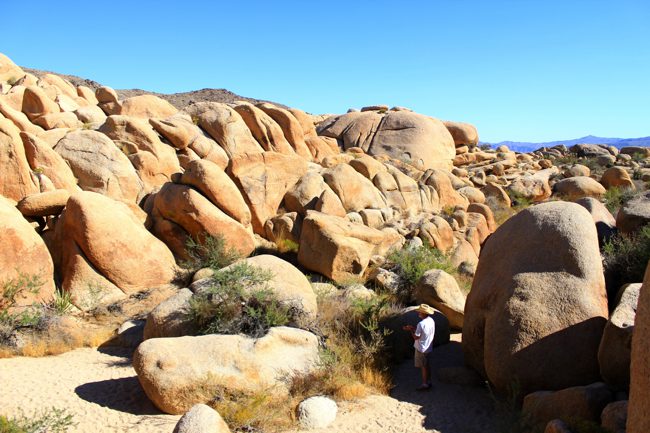
Skull Rock
Skull Rock is even easier to find, as it is located right on the main road that runs through the park. You can see it from your car, and it appears like the top part of a skull with the way it is shaped. You can see the eyes and head in the picture below; however, when you get up close and look at it head-on, it is hard to see the skull appearance from the rock.

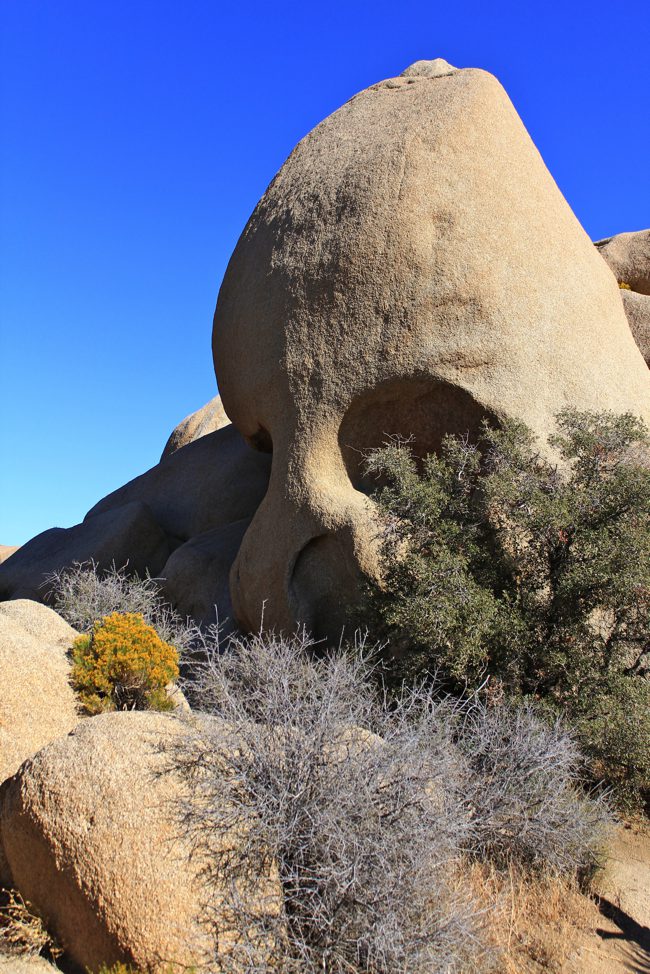
Cholla Cactus Garden
Lastly, we stopped by the Cholla Cactus Garden. It is also located directly off the road, and you can simply park and walk to it. The Cholla Cactus is also called the Jumping Cactus and is described as:
“The “jumping cholla” name comes from the ease with which the stems detach when brushed, giving the impression that the stem jumped. Often the merest touch will leave a person with bits of cactus hanging on their clothes to be discovered later when either sitting or leaning on them. The ground around a mature plant will often be covered with dead stems, and young plants are started from stems that have fallen from the adult. They attach themselves to desert animals and are dispersed for short distances.”
Believe me, the above information is correct. My father tried to pick up a broken piece on the ground to look at it, and it completely attached to his hand instantly. It was challenging to get out as well, so make sure you only look and do not touch.
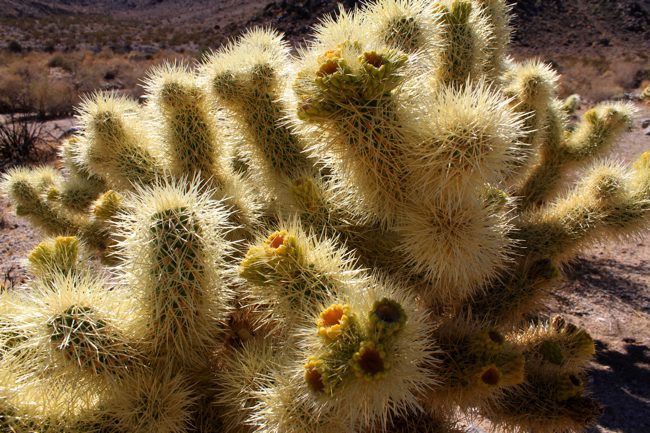

These cactus are beautiful, though, and they are something you do not often encounter. The spikes are so dense that it is interesting to see there is actually a base under them. There are about 1,000 of these cactus in the cholla cactus garden, so I would recommend you go check it out.
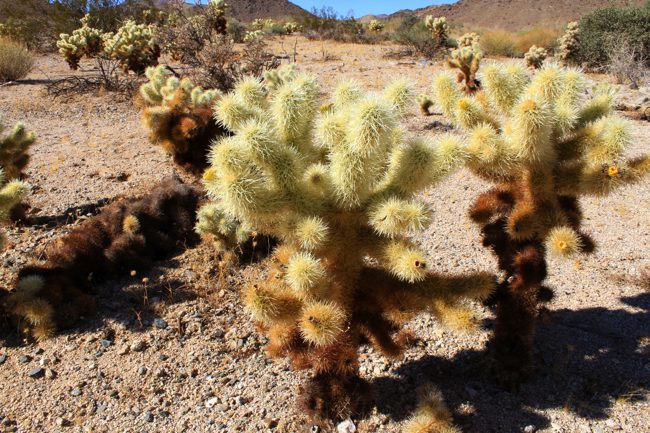

Joshua Tree National Park is a beautiful area full of many exciting things to see. I would love to have more time to explore here and plan to come back and see more in the future. If you visit the park and only have limited time, I would check out these areas above (here is a good map to use). Let me know if you have other suggestions for things to see in Joshua Tree in the comments.



